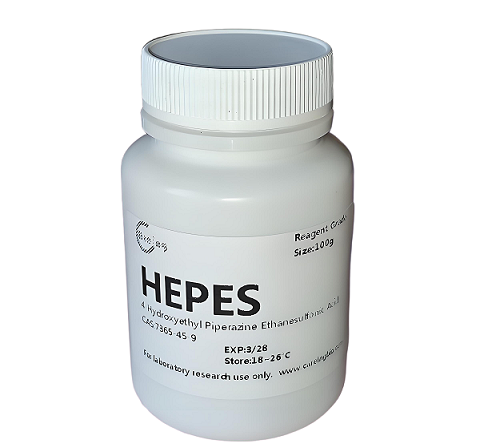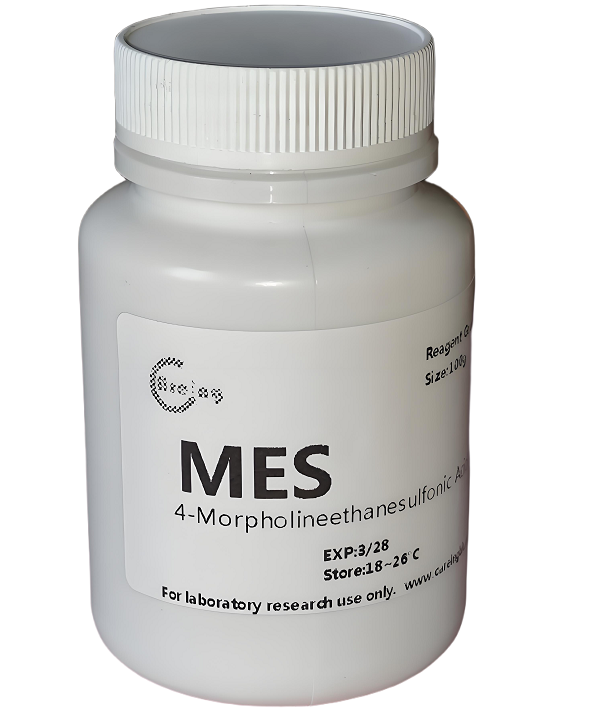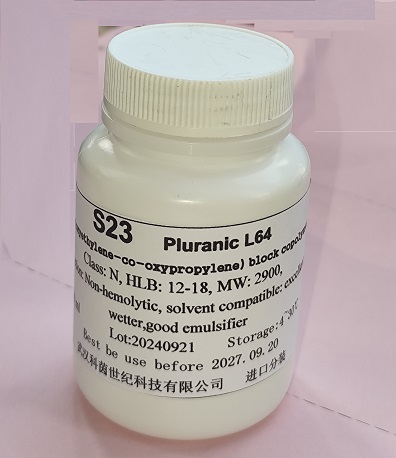武汉科茵世纪提供快速诊断试纸条中常用表面活性剂
QQ:859751315 ,TEL:15377677601
Immunoasaay Enhancers
for Researchers and Manufacturers
SURFACTANT TOOLKit
The Surfactant ToolKit contains 25 individual surfactants, many of which are not available from laboratory chemical supply houses. These surfactants have been proven by hands-on experience to be the most useful ones for the development of diagnostic test kits. Gentle, enzyme-compatible, Non Hemolyzing traits are among the many properties you will find for these surfactants:
You Get These Advantages:
*Improved Precision
*Uniform Color Development
*Faster Wetting By Sample
*Uniform Uptake of Impregnation Reagents
*Faster Reaction Times
*No Precipitation of Reagents
*Enzyme Stabilization/Activation
*Faster Solubilization of Raw Materials
*Dispersion of Insoluble Reagents
*Emulsification of Oily Reagents
*Uniform Wetting of Membrane Supports
*Faster Resolubilization of Reagents
*Compatible With Organic Solvents
*Reproducible Sample Uptake
*No Air Bubbles in the Support
The use of surfactants in in vitro diagnostic test kit is well known to those skilled in the art, but the surfactants may not be readily available to laboratory investigators who are new to this technolog. The Surfactant ToolKit distributed by Research Diagnostics Inc is the first step to solving this problem. Even experienced reagent developers will find new surfactants and properties which they have not used before.
What You Will Receive.....
We include 25 cationic, anionic, nonionic, and amphoteric surfactants. Bottles contain 20 to 25 grams of each surfactant. Included for each surfactant are its trade name, chemical names, HLB, formula weight, and examples of its function, all in a handy clamshell case.
Are You In Any of these Areas? Then this kit is for YOU!
*Immobilized Particles
*Dry Reagent Strip Tests
*Medical Diagnostic Test Kits
*Environmental Test Kits
*Immunoassay Test Kits
*ELISA Test Kits
*Bioremediation
*Agricultural Test Kits
*Contamination Residue Clean-up
*Pesticide Solubilization
Reagent Kit Optimization using the Surfactant ToolKit
First, decide what basic problems are inherent in your test. Are they manufacturing or performance problems? Manufacturing problems are generally related to reagent solubility, poor stability of the stock reagent dip, uneven impregnation/coating of the web support, air bubbles in the device, wetability, or inadequate emulsification. Performance problems typically are poor precision, lack of lot-to-lot reproducibility, low signal to background noise ratio, limited range of response, and/or limited stability/shelf-life. All these are surfactant-related problems which could be preventing your test from performing better.
Next, design a screening experiment that clearly measures the characteristics to be improved. It is best to screen all 25 of the surfactants in the kit, if possible.
Incorporate the 25 surfactants individually into formulation at low and high concentration levels (if you don't know what to pick, try 0.3 and 0.8%). Don't neglect to use a surfactant in each solution which will be a separate component of the kit. some surfactants may not be soluble.
You will now have as many as 50 formulations. Test these formulations under full assay conditions.
Now, simply look for the formulation(s) with the best performance characteristics. You may want to fine-tune for the optimal surfactant concentration for the one chosen.
It's possible that more than one surfactant will be desirable in your formulation, if you have multiple performance characteristics to fix; most surfactants can be combined in together. Don't forget to choose surfactant levels above or below the level that gave good results. You may want to use formula optimization techniques at ths point. Additional technical assistance and optimization protocols may be available on custom contract-inquire for costs and details.
If you obtained some improved performance with one or more of the surfactants but desire even more improvement, contact us. We can make available to you surfactants which have properties similar to the ones in the kit but were not included. For each surfactant in the kit, many more are usually available which have similar but distinct structures. Don't stop short of the desired performance characteristics you are seeking.
Surfactants are not the only ingredients to give improved performance & manufacturability. Polymers, Functional Materials,Biocides & Preservatives can also be key ingredients to accomplish your objectives. See our other developers kits.
Surfactant Definitions and Functions
Surfactant-an acronym for surface active agent. This is a more modern term than detergent, generally taking the place of the term detergent when referring to wetters, solubilizers, emulsifiers, and other items defined below. Surfactants almost always work to reduce attractive interactions between like particles and bring them to unlike surfaces. Surfactant is the name we use as a general term for all our Surfactant ToolKit items.
Wetting- this is simply the action of a surfactant to reduce the surface tension of a liquid. It does this by reducing like attractions of molecules with each other (such as with water) and increase the attraction towards an unlike surface. This is extremely important when reconstituting dry powders, dry beads, or reagents in solid-phase devices. If the speed and evenness of reconstitution is important, then a good wetting agent is essential. Trition X305, Surfactant 10G, Silwet L7600, and BioTerge AS-40 are all very good wetters.
Solubilizers - these are surfactants that can effect a solubilization of an otherwise insoluble material. If a concentration of surfactant is made high enough, micelle structures are formed. Insoluble molecules are then incorporated into the micelles and brought into apparent solution. Oftentimes reagent developers are faced with the dilemma of having to use water-insoluble substances in aqueous solutions, or water-soluble substances in organic solvents. Surfactants with good solubilizer properties can solve either problem. We once used Ninate 411 to solubilize a diazonium salt in acetone.
Emulsification - this is the property of surfactants to form a stable emulsion of two or more immiscible liquids. This is a little like micellular solubilization, but the resultant solubilizing particles are much bigger. Occasionally you might have a reagent in an oil form that needs to go into an aqueous solution.There are several surfactants such as Trition X45, BRIJ 35, the TWEENs. and Igepal CA210, that can help with this.
Dispersion - an important property of surfactants that keeps insoluble particles in suspension. They do this by preventing insoluble particles from aggregating with each other. The smaller the particles, the more stable the dispersion formed. Have you ever scaled up a reagent prep and had the pilot supervisor point out a bunch of unsightly crud settling out, hithert unseen at the bench? Your worst nightmare! Sometimes even the best of efforts will not keep things in solution, and then what you need is a surfactant with good dispersing properties. Tetronic 1307,Geropon T-77, and Rhodasurf ON-870 are good choices here.
Detergency - the ability of a surfactant to remove particles from a surface. We use this narrow definition to describe a detergent. Liken this function to the cleaning action of a surfactant to lift soil from a fabric. In the reagent development setting, it might be desirable to release reagents from membranes, paper filters, glass surfces and the like upon wetting. Surfactants with long, straight carbon chains, such as Bio-Terge AS-40,Standapol ES-1, and Chemal LA-9, are often the most effective here.
Surfactant Toolkit Contents: (subject to change without notice-see insert with each kit)
1. Amine alkylbenzene sulfonate, Trade Name: NINATE 411, Class A, MW: 385,
Function: Solvent compatible,good enulsifier.
2. Poly(oxyethylene-co-oxypropylene) block polymer: Trade Name:Pluorinic (tm) F68, Class N, MW 8400, Function: excellent solubilizerand detergent; probably non-hemolytic
3. Telomer B monoether with polyethylene glycol,Trade name: Zonyl(tm)FSN 100, Class N, Function: Excellent wetter at very low concentration.Soluble in 30% IpOH, alcohols.
4. Sodium dioctylsulfosuccinate, Trade name: Aerosol(tm) OT 100%. Class A, MW 445, Function: Useful in solvent/TMB systems,a strong wetter and emulsifier, good antifog, mold-release and dispersing properties.
5. Sodium N-oleyl-N-methyltaurate, Trade name GEROPON(tm) T-77, Class A, MW 425, Function: Good wetting, dispersing properties.
6. Sodium olefin(C(14)-C(16)) sulfonate, Trade name BIO-TERGE(tm) AS-40, Class A, MW 315, Function: Mild, solvent-compatible.
7.Sodium polyoxyethylene(1) lauryl sulfate, Trade name STANDAPOLES-1, Class A, MW 346, Function: A strong anionic surfactant. Contains 2 parts in 5 sodium lauryl sulfate.
8.`Benzalkonium (C(8)-C(18)) chloride, Class C, MW Mixture, Function, Antimicrobial,solvent compatible.
9. Ethylenediamine alkoxlate block copolymer, Trade name, Tetronic(tm) 1307, Class M, HLB >24, MW 18600, Function: Non-hemolytic. solvent compatible, antistatic: good defoamer, disperser.
10.2,4,7,9-Tetramethyl-5-decyne-4,7-diol ethoxylate (10), Trade name: Surfynol(tm) 465, Class: N, HLB: 13, MW: Mixture, Function: Non-hemolytic; good wetter and defoamer.
11.2.4.7.9-Tetramethyl-5-decyne-4, 7-diol ethoxylate (30), Trade name: Surfynol(tm) 485, Class: N, HLB: 17, MW: Mixture, Function: Non-hemolytic, enzyme-compatible: good wetter and defoamer.
12.Octylphenol ethoxylate (1.2), Trade name: IGEPAL(tm) CA210, Class: N, HLB: 4.6, MW: 272, Function: Solvent compatible, good emulsifier.
13.Octylphenoxypolyethoxy (5)ethanol, Trade name: TRITON(tm) X-45, Class N, HLB: 10.4, MW: 426, Function: Solvent compatible: good emulsifier and dispersant.
14.Octylphenoxypolyethoxy(9-10)ethanol, Trade name: TRITON(tm) X-100, Class: N, HLB: 13.5, MW: 625, Function: Emulsification, wetting, dispersing; very enzyme compatible.
15.Octylphenoxypolyethoxy(30)ethanol, Trade Name: TRITON(tm) X305, Class: N, HLB: 17.3, MW: 1526, Function: Non-hemolytic, very water soluble: good wetter and emulsifier.
16.Polydimethylsiloxane methylethoxylate, Trade name: SILWET(tm) L7600, Class N, HLB: 13-17, MW: 4000, Function: Non-hemolytic, silicone-based; water soluble, antifogging.
17.Polyethoxylated(20) oleyl alcohol, Trade name: RHODASURF ON-870, Class: N, HLB: 15.4, MW: 1148, Function: Emulsifier,solubilizer, dispersant.
18.Polyethoxylated(35) castor oil, Trade name: Cremophor(tm) EL, Class N, HLB: 12-14, MW: NA, Function: Non-hemolytic, solvent compatible: emulsifier, solubilizer.
19. Polyoxyethelene(20)sorbitan monolaurate, Trade name: TWEEN(tm) 20, Class: N, HLB: 16.7, MW: 1228, Function: Non-hemolytic, very hydrophillic; solubilizer, emulsifier.
20.Polyoxyethelene(20)sorbitan monooleate, Trade name: TWEEN(tm)80,Class: N, HLB: 15 MW: 1310, Function: Non-hemolytic,very hydrophillic: solubilizer, emulsifier.
21.Polyoxyethylene(23) dodecyl ether, Trade name: BRIJ(tm) 35, ClassN, HLB: 16.9, MW: 1200, Function: Good Emulsifier.
22.Polyoxyethylene(9) lauryl alcohol, Trade name: CHEMAL LA-9, Class: N, HLB: 13.3, MW: 583, Function: Protein solubilization.Same structure as THESIT(tm).
23.Poly(oxyethylene-co-oxypropylene) block copolymer, Trade name: Pluranic(tm) L64, Class: N, HLB: 12-18, MW: 2900, Function: Non-hemolytic, solvent compatible: excellent wetter,good emulsifier.
24.p-[sonomylphenoxypoly(glycidol), Trade name: SURFACTANT 10G, Class: N, HLB: 12.4, MW: Mixture, Function: Non-hemolytic, v.enzyme-compatible, low foaming: good wetter.
25.Sorbitan Monostearate, Trade name: SPAN(tm) 60, Class: N, HLB: 4.7, MW: 431, Function: Oil soluble, solvent-compatible, water insoluble.
N = nonionic A = anionic
C = cationic M = amphoteric
HLB = Hydrophile-Lipophile Balance Number. The higher the number, the more hydrophilic the surfactant. Only applies to non-ionics.
NINATE(tm) and BioTerge(tm) are registered trademarks of Stephen Co. Aerosol(tm) is a registered trademark of American Cyanamide Co. Geropon(tm) and Igepal(tm) are registered trademarks of Rhone-Poulenc,Inc. Pluronic(tm), Tetronic(tm), and Cremophor(tm) are registered trademarks of BASF Corp. Surfynol(tm) is a registered trademark of Air Products and Chemicals Inc. TRITON(tm) and SILWET(tm) are registered trademarks of Union Carbide. TWEEN(tm), BRU(tm), and SPAN(tm) are registered trademarks of ICI Americas, Inc. Zonyl(tm) is a registered trademark of Du Pont Chemicals.
Applications Notes (additional information providied with the kit=here is a sample):
Bio-Terge AS-40. tm
We used this surfactant effectively in solving some wetting and solubility problems during the development of a dry-phase urinary test device. We were experiencing a mottled color response and somewhat slow reaction times. We had a water-insoluble indicator that had resolubilize in an aqueous biological fluid, knew that wetting and solubility were the chief problem areas. We also knew that our current surfactnt, being applied in a pH 9 aqueous system, was helping somewhat, and thus launched a screen over a dozen likely surfactant choices. Bio-Terge AS-40,a mild anionic surfactant, stood out head-and-shoulders above the other candidates. The color response was strikingly better in appearance, with significant reaction speed gains.
Ninate 411. tm
In another impregnation mix, we were using methylisobutylketone (MIBK) as impregnation solvent. This was a highly desirable choice over acetone for both safety and reagent stability (MIBK does not absorb water) reasons. Unfortunately, the diazonium salt we were using precipitated out of solution during the impregnation run and could not be substituted by another. We had been using no surfactant at all, and in fact rarely if ever did in organic solvents. A screen for MIBK soluble surfactants produced 6 or 8 candidates, which we then tested to hold the diazonium salt in solution. Ninate 411 was the clear winner, and now afforded us unlimited pot-life times with regard to diazonium salt stability.
Aerosol OT 100%. tm
This surfactant is essential for tetramethylbenzidine (TMB) stability. TMB is an oxidative-type indicator that readily overoxi-izes to a cruddy brown color that is undesirable for either visual or instrumental readout. Aerosol OT stops the oxidation process at the nice classic robins-egg blue color. Aerosol OT is believed to accomplish this through a complexing with the TMB. The complex is tightest at the first oxidation state of TMB, and is thus stabilized at that point. Aerosol OT/TMB systems are soluble in organic solvents such as toluene. It can also be used in aqueous solutions, in which case TMB-HCI would be the appropriate indicator form.
Sodium cholate/deoxycholate.
These are important surfactants for cholesterol chemistries. Cholates are effective cholesterol solubilizers and cholesterol enzyme activators due to the common steroidal-like backbone structure of these surfactants and cholesterol. It is a good idea to try more than one cholate in a screen, since solubility characteristics can vary with factors such as pH and ionic strength.
SILWET L7600. tm
This is a unique siloxane-based surfactant with excellent wetting power. SILWET L7600 is among the few surfactants capable of wetting Teflon (PTFE) surfaces. It is highly soluble in both water and many organic solvents. We found this surfactant particularly useful once in a the development of a solid-phase whole-blood diagnostic device that was yielding biased numbers at high RBC hematocrit. A large array of surfactants was tested, and this was the only one that could eliminate the bias. It was thought that this surfactant through its powerful action at interfaces was interference by RBCs at the RBC-test surface interface. This surfactant is totally non-hemolytic. Typical use level is from 0.01 to 1%.
Surfynot 465/485. tm
This pair of surfactants is also very gentle on red blood cells and can be placed directly in materials used to adsorb or filter RBCs. Both surfactants improve the stability of latex suspensions when used either as sole emulsifying agent or in conjunction with other emulsifying surfactants. They are low-foaming, high-wetting,and are the surfactants of choice for achieving an even coating of membranes with reagents.Surfybnot 485 has a higher HLB and is thus somewhat more water soluble, although both are soluble in water to levels greater than 1.0%. Surfynol 465 has slightly lower surface tension.
|
编号
|
名称
|
CAS号
|
分子量
|
类别
|
HLB
|
应用
|
规格
|
|
S2
|
Pluorinic F68
|
9003-11-6
|
8350
|
非离子型
|
>24
|
卓越的增溶剂和去污剂;可能具有非溶血性
|
|
|
S3
|
Zonyl FSN 100
|
65545-80-4
|
/
|
非离子型
|
|
低浓度时是卓越的润湿剂,可溶于30%酒精和碱液
|
|
|
S4
|
Aerosol OT 100%
|
577-11-7
|
445
|
阴离子型
|
|
良好的湿润剂和乳化剂,在溶剂/TMB 系统中具有功效
|
|
|
S5
|
Geropon T-77
|
137-20-2
|
425
|
阴离子型
|
|
良好的湿润剂和分散剂
|
|
|
S6
|
BIO-TERGE AS-40
|
68439-57-6
|
315
|
阴离子型
|
|
温和的表面活性剂,溶剂相容性
|
|
|
S7
|
STANDAPOLES-1*
|
/
|
346
|
阴离子型
|
|
强阴离子表面活性剂,月桂醇聚醚硫酸酯钠盐
|
|
|
S8
|
Benzalkonium chloride
|
63449-41-2
|
284
|
阳离子型
|
|
溶剂相容性,抗菌
|
|
|
S9
|
Tetronic 1307
|
/
|
18600
|
两性
|
>24
|
非溶血性,溶剂相容性,抗静电,良好的消泡剂和分散剂
|
|
|
S11
|
Surfynol 485*
|
/
|
700
|
非离子型
|
17
|
非溶血性,酶相容性,良好的湿润剂和消泡剂
|
|
|
S12
|
IGEPAL CA210
|
26636-32-8
|
294
|
非离子型
|
4.6
|
溶剂兼容,良好的乳化剂
|
|
|
S13
|
TRITON X-45*
|
52623-95-7
|
426
|
非离子型
|
10.4
|
溶剂相容性,良好的乳化剂和分散剂
|
|
|
S14
|
TRITON X-100
|
9002-93-1
|
625
|
非离子型
|
13.5
|
酶相容性,良好的湿润剂、乳化剂和分散剂
|
|
|
S15
|
TRITON X-305
|
9002-93-1
|
1526
|
非离子型
|
17.3
|
非溶血性,水溶性,良好的湿润剂、乳化剂和分散剂
|
|
|
S16
|
SILWET L7600
|
/
|
4000
|
非离子型
|
13-17
|
非溶血性,含硅成分,具水溶性和防雾性
|
|
|
S17
|
RHODASURF ON-870
|
/
|
1148
|
非离子型
|
15.4
|
乳化剂、增溶剂、分散剂
|
|
|
S18
|
Cremophor EL
|
61791-12-6
|
3000
|
非离子型
|
12-14
|
非溶血性,溶剂相容性,良好的乳化剂和增溶剂
|
|
|
S19
|
TWEEN 20
|
9005-64-5
|
1228
|
非离子型
|
16.7
|
非溶血性,极强亲水性,良好的乳化剂和增溶剂
|
|
|
S20
|
TWEEN 80
|
9005-65-6
|
1310
|
非离子型
|
15
|
良好的乳化剂和增溶剂
|
|
|
S21
|
BRIJ 35
|
9043-30-5
|
1200
|
非离子型
|
16.9
|
良好的乳化剂和增溶剂
|
|
|
S22
|
CHEMAL LA-9*
|
/
|
583
|
非离子型
|
13.3
|
蛋白增溶剂
|
|
|
S23
|
Pluranic L64
|
9003-11-6
|
2900
|
非离子型
|
12-18
|
非溶血性,溶剂相容性,低发泡,良好的湿润剂
|
|
|
S24
|
SURFACTANT 10G
|
/
|
/
|
非离子型
|
12.4
|
非溶血性,酶兼容,低发泡,良好的湿润剂
|
|
|
S25
|
SPAN 60
|
1338-41-6
|
430
|
非离子型
|
4.7
|
油溶性,溶剂相容性,水不溶性
|
|





